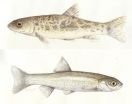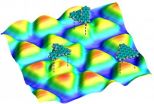(Press-News.org) Night-time violence among young Spaniards is becoming ever more common, according to a research study carried out by the European Institute of Studies on Prevention. The study shows that 5.2% of young people carry weapons when they go out at night, 11.6% have been attacked or threatened, and 23% have got into a fight at some time.
"Reports about young people being attacked or injured in fights when they go out at night are becoming increasingly common", Amador Calafat, lead author of the study and a researcher at the European Institute of Studies on Prevention (IREFREA), which is at the forefront of studies into problems of childhood and adolescence and drug abuse, tells SINC.
The research, published in the latest issue of the Journal Psicothema, analyses the phenomenon of violence among young Spaniards (under the age of 25), in particular in terms of factors related to the night-time leisure context, among a selected sample of 440 participants in the Balearic Islands, Galicia and Valencia who regularly go out at night and consume alcohol or other substances.
Of this sample, 11.6% had been attacked or threatened at some time. This percentage rose to 23% for fights. The research goes further, finding that 5.2% of the young people studied carry weapons when they go out at night. "Having been threatened or hurt with a weapon was associated with having frequent arguments related to the use of alcohol and drugs", Calafat explains.
The authors state that adolescence is a risk factor itself, since young people are more prone and vulnerable to this kind of behaviour. Some important aspects for preventing night-time violence relate to the way in which environmental conditions are managed. These include preventing crowds from building up, using soft music when bars and clubs close and bright lights when it is time to leave.
"In order to prevent night-time violence, alcohol consumption among young people should be controlled by offering water and soft drinks at affordable prices, steering away from 'happy hour'-type alcohol offers, and strictly ensuring that alcohol is not sold to underage drinkers", the researcher concludes.
Violence among young tourists
Tourist destinations in southern Europe attract young people because of the good times and night-time action they promise. In another study, financed by the European Commission Daphne programme, the same research group studied the behaviour of young British and German tourists who chose to spend their 2009 holidays in Portugal, Spain, Italy, Greece and Cyprus.
The figures were impressive. Almost one-quarter of the study's participants (24%) visited bars and clubs every night during their holidays, and 95% consumed alcohol during their stay. More than two-thirds of the young respondents got drunk, and more than one in 10 took illegal drugs.
The 6,000 young tourists surveyed reported significant problems during their holidays. Almost 9% were sexually abused (7% of males and 10% of females), 6% suffered injuries and 4% were involved in cases of physical violence. More than half of the violent incidents (51%) took place in bars or nightclubs, while the rest (36%) took place on the street.
INFORMATION:
References:
Nicole Blay, Amador Calafat; Montse Juan, Elisardo Becoña, Alejandro Mantecón, Marga Ros y Antoni Far: "Violence in nightlife environments and its relationship with the consumption of alcohol and drugs among young Spaniards". Psicothema, Volúmen 22, Número 3, 2010. http://www.psicothema.com/pdf/3743.pdf
23 percent of young people get into fights when they go out at night
2010-11-12
ELSE PRESS RELEASES FROM THIS DATE:
Invasive species -- the biggest threat to fish in the Mediterranean basin
2010-11-12
An international team led by the Forest Technology Centre of Catalonia has carried out the first large-scale study of the threats facing freshwater fish in the Mediterranean basin. Invasive species, along with over-exploitation of water resources, are the most important pressures, and those that expose fish to the greatest risk of extinction.
"The continental fish of the Mediterranean basin are one of the most threatened biological groups in the world", Miguel Clavero, lead author of the study and a researcher from the Landscape Ecology Group of the Forest Technology ...
Scientists at IRB Barcelona and BSC publish the world's largest video data bank of proteins
2010-11-12
After four years of conducting intensive calculations in the supercomputer MareNostrum at the Barcelona Supercomputing Center, scientists headed by Modesto Orozco at the Institute for Research in Biomedicine (IRB Barcelona) have presented the world's largest data base on protein motions. Called MoDEL, this new database holds more than 1,700 proteins and is partially accessible through Internet to researchers worldwide. MoDEL has been developed to study the basic biology of proteins and to accelerate and facilitate the design of new pharmaceutical agents.
"Nowadays we ...
UT professors find mixing business with politics pays off
2010-11-12
Now that the 2010 election is over, here is something to consider for the 2012 race: If you want to fatten your company's profits, contribute to a political campaign.
A study by two College of Business Administration professors at the University of Tennessee, Knoxville, found that when firms engage in corporate political activities, such as lobbying and making campaign contributions, they enjoy about 20 percent higher performance. The study, by Russell Crook and David Woehr, along with Sean Lux of the University of South Florida, entitled "Mixing Business with Politics: ...
Teens' take on bullying
2010-11-12
Both the bully and the victim's individual characteristics, rather than the wider social environment, explain why bullying occurs, according to Swedish teenagers. The new study, by Dr. Robert Thornberg and Sven Knutsen from Linköping University in Sweden, also shows that 42 percent of teenagers blamed the victim for the bullying. The study is published online in Springer's journal, Child & Youth Care Forum.
In one of the rare studies investigating young people's views on why bullying takes place in school, Thornberg and Knutsen explored how teenagers explain bullying ...
Step by step toward tomorrow's nanomaterial
2010-11-12
Electronic components are getting smaller and smaller, with microelectronic components gradually being replaced by nanoelectronic ones. On nanoscale dimensions, silicon, which is at the present stage the most commonly used material in semiconductor technology, reaches however a limit, preventing further miniaturization and technological progress. New electronic materials are therefore in great demand. Due to its outstanding electronic properties, graphene, a two-dimensional carbon network, is considered as a possible replacement. However, several obstacles must be overcome ...
Circuitry of fear identified
2010-11-12
Fear arises in the almond-shaped brain structure known as the amygdala. It is the amygdala which processes the strange noise, shadowy figure or scary face and not only triggers palpitations or nausea but can also cause us to flee or freeze. That much has long been known about the function of this part of the brain. What remains largely unclear, however, is precisely how fear develops, and which of the countless neurons in the amygdaloid region are involved in this process. But finding answers to these questions is vital for those who wish to improve the quality of life ...
African dust caused red soil in southern Europe
2010-11-12
Spanish and American researchers have conducted a mineralogical and chemical analysis to ascertain the origin of "terra rossa" soil in the Mediterranean. The results of the study reveal that mineral dust from the African regions of the Sahara and Sahel, which emit between 600 and 700 tonnes of dust a year, brought about the reddish soil in Mediterranean regions such as Mallorca and Sardinia between 12,000 and 25,000 years ago.
"The first hint of the relationship between African dust and certain soils in the region of the Mediterranean is their reddish or reddish-brown ...
Alcohol damages much more than the liver
2010-11-12
MAYWOOD, Ill. -- Alcohol does much more harm to the body than just damaging the liver. Drinking also can weaken the immune system, slow healing, impair bone formation, increase the risk of HIV transmission and hinder recovery from burns, trauma, bleeding and surgery.
Researchers released the latest findings on such negative effects of alcohol during a meeting Nov. 19 of the Alcohol and Immunology Research Interest Group, held at Loyola University Medical Center.
At Loyola, about 50 faculty members, technicians, post-doctoral fellows and students are conducting alcohol ...
Leaking underground CO2 storage could contaminate drinking water
2010-11-12
DURHAM, N.C. -- Leaks from carbon dioxide injected deep underground to help fight climate change could bubble up into drinking water aquifers near the surface, driving up levels of contaminants in the water tenfold or more in some places, according to a study by Duke University scientists.
Based on a year-long analysis of core samples from four drinking water aquifers, "We found the potential for contamination is real, but there are ways to avoid or reduce the risk," says Robert B. Jackson, Nicholas Professor of Global Environmental Change and professor of biology at ...
Sugar and slice make graphene real nice
2010-11-12
HOUSTON -- (Nov. 11, 2010) -- Future computers may run a little sweeter, thanks to a refinement in the manufacture of graphene at Rice University.
Rice researchers have learned to make pristine sheets of graphene, the one-atom-thick form of carbon, from plain table sugar and other carbon-based substances. They do so in a one-step process at temperatures low enough to make graphene easy to manufacture.
The lab of Rice chemist James Tour reported in the online version of the journal Nature this week that large-area, high-quality graphene can be grown from a number of ...




